Registered with the Registrar of Newspapers for India under R.N.I 53640/91
Vol. XXVI No. 16, December 1-15, 2016
Focus on TN’s business surge
by Janaki Venkataraman
Most Chennaiites are familiar with the stories of the big business houses. The really absorbing part of Sushila Ravin-dranath’s book is the latter half, about the companies that started from around the 1970s and after, the software pioneers, the retai-lers, some quirky start-ups that succeeded and some that did not.
One of the major financial success stories of the 1970s is that of Shriram Chit Funds. The lower and middle income groups in Tamil Nadu have always been avid fans of saving through chit funds (despite the risks).
Shriram Chit Funds, set up by R. Thiaga-rajan in 1974, with a small investment of Rs. 1 lakh, capitalised on this trend with phenomenal success. The success was due to the fact that it ran a rock-solid business, where the custo-mer’s interest was safeguarded and it never defaulted on a single payment, even during times when the Company faced crisis.
The Shriram Group then went on to commercial vehicle, retail, enterprise, mortgage and equipment financing and insurance. It is currently looking at banking as its next venture.
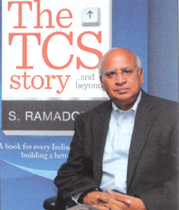 S. Ramadorai.
S. Ramadorai.
This segment on “New Companies” is actually a fun read, as the people in them are far more forthcoming and laid back. We get interesting little tidbits about corporate players here, like that about R. Thiagarajan, the Chairman of the Shriram Group. The man doesn’t own a cell phone. “Everyone around me has a phone,” he explains cheerfully. “I can use theirs, yours…”
Dr. Pratap C. Reddy of Apollo Hospitals, talks about what propelled him towards building the mega hospital chain.
“When I came back from the U.S to set up practice in India, I found there were no adequate services when people needed it. As a cardiologist I was forced to send them to the U.S when patients needed advanced medical attention. The last straw was when I lost a young man who could not afford Rs.40,000 for a surgery.”
That was 33 years ago. At a time when the idea of a corporate hospital chain was unheard of and Chennai’s healthcare facilities, apart from the government hospitals, extended only to a few nursing homes and small privately run hospitals, Pratap Reddy envisioned a multi-crore, super-specialty hospital offering a comprehensive range of medical services. He knew this was not possible unless the hospital was commercially viable. This would mean raising funds by public offering. This was bold thinking. Reddy achieved more than what he had dreamed of.
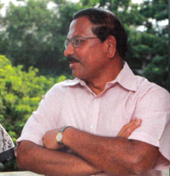 Pandiarajan.
Pandiarajan.
Not every corporate effort during this time proved as successful. Despite efforts by several Tamil Nadu companies, the State never quite profited from the petro-chemical boom of the 1980s. The pioneers were Chemplast, Spic, Tamil Nadu Petro Products, RPG Enterprises and Kothari Industrial Corporation. These were all set up to use the raw materials produced by Madras Refineries and manufacture chemical products from them.
Many of these ventures never quite took off for a variety of reasons. Among those that did, Chemplast and Spic stand out. Chemplast still remains a respected name in PVC manufacture, but its playing field was much reduced by the entry of Reliance.
As for Spic, the company seemed unstoppable in till the mid-90s. Spic was jointly promoted by M.A. Chidambaram and the Tamil Nadu Industrial Corporation(TIDCO) in 1969. He was then the only businessman in the State willing to tie up with the State government. This was to prove both a blessing and the company’s eventual undoing.
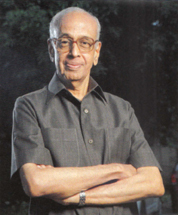 R. Thyagarajan
R. Thyagarajan
Initially Spic was plagued by starting trouble and had incurred heavy losses by 1977. S. Venki-ta-ra-man, a senior IAS Officer (later RBI Governor) was roped in to revive Spic. He performed a miracle and turned the Com-pany’s fortunes around.
Trouble struck again when the government changed hands. Because of its TIDCO connection, caught in the political crossfire between the State’s two established parties, Spic’s fortunes see-sawed for several years. A number of bad corporate judgments down the road sealed the fate of the giant who was once called the “Reliance of the South”.
My personal favourites among the segments in this book are the ones titled ‘Pioneers of the 90s’ and ‘Disasters of the 90s’. During this time many entrepreneurs took the plunge into the gathering wave of computers and telecom. Some swam brilliantly, some drowned and some dragged others under with them.
At a time when very few people owned home computers in Chennai and even less used the Internet, Sify was launched by Satyam Infoway Ltd in 1995. “Few people can now understand the important role of Sify in spreading internet usage and the beginning of e-commerce,” Ravin-dranath recalls. “Sify was a true pioneer.” Says R. Ramraj, who started Sify and was its CEO until 2006. “We worked at setting up a truly world-class company which would make a global impact.”
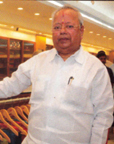 Nalli Kuppuswamy Chetty
Nalli Kuppuswamy Chetty
Sify built India’s widest public network, offering a range of services including shopping portals, covering 220 cities and with more than four lakh subscribers. Sify was also the first Indian Internet company to go public on the Nasdaq to raise funds for expansion. “It was thanks to Sify that people realised that entrepreneurs could make serious money from the Internet.” Rama-linga Raju, the promoter of Satyam Infoway and Sify, later sold Satyam’s shares in Sify to Infinity Capital Ventures.
Another pioneer from Chennai who helped to start the telecom revolution in India was C. Sivasankaran, of the Sterling Group. But his story, as Ravin-dranath points out, is “one of high drama’! It’s a story to be read in the book of ups and downs.
The story began in1980, when Sivasankaran, who with no special background in electronics, changed the face of the Indian computer market by offering the lowest priced PC of the time, Siva PC. It was less than Rs.30,000 and delivered on the same day to the customer. He moved on from here into making money from acquiring and selling telecom orders.
Siva became a citizen of the Seychelles, turned NRI and began operating out of Singapore and California. “There were lifestyle changes as well,” Ravin-dranath describes. “Siva had become seriously rich. He had armed squads accompanying him everywhere. He had an entire floor in Singapore’s luxurious Ritz Carlton and in California he moved into rap musician M.C. Hammer’s vast estate.”
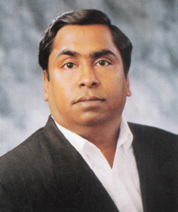 C. Sivasankaran
C. Sivasankaran
Controversy following controversy in India, Siva faced a host of problems. Arriving out of them, the Supreme Court of Seychelles declared C. Sivasan-karan bankrupt. No one really believes that he is and most of the companies to whom he owed money have vowed to get it back!
If one is talking about Siva-sankaran can Sun TV be far behind? Recent controversies have bound the two together in the public eye. That apart, there is no question that Sun TV is one of the most successful TV channel brands in India. In Tamil Nadu it is clearly the leader. Ravindranath says,” Kalanidhi Maran, Chairman and Managing Director of Sun TV, does not believe in also-rans. He has to be the market leader or, till that happens, a strong number two in whichever business he is in.”
It did not turn out that way in the case of his last acquisition, the low-cost airline, Spice Jet. Maran acquired it as a profit making company in 2010. By 2014, the airline had incurred disastrous losses. In 2015 Maran transferred control of the airline to Ajay Singh who ran the airline earlier.
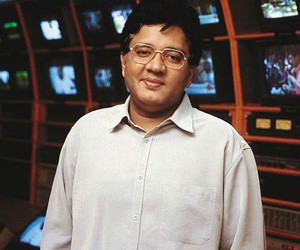 Kalanithi Maran
Kalanithi Maran
Maran’s core strength has been the Sun TV network. Critics attribute his success to his strong political ties. His grand uncle, M. Karunanidhi has been CM of Tamil Nadu five times and is the head of the DMK party. His late father, Murasoli Maran was Union Industries Minister. His brother Dayanidhi Maran has been Union Minister twice.Maran points out, however, that when he started Sun TV, the AIADMK was in power. Raising money through banks and family borrowings, Maran, along with a number of friends launched Sun TV. At first the telecast was for three hours through the transponder of ATN television. In 1993, when uplinks were permitted freely, Sun TV was among the first to uplink -directly.
Today, apart from Tamil, Sun TV telecast in all the other three Southern languages, has 33 channels in its network that reach more than 95 million households. The Group also runs a FM radio station, two daily newspapers and six magazines. At the moment, Maran is definitely the Moghul of the South Indian media.
One of the most absorbing reads in ‘Surge’ is the account of the amazing Mr. Rajarathinam, the take-over man.
“No one knew P. Raja-rathi-nam in the beginning of 1994, yet he rose to become a star on the Indian corporate -horizon by the end of that year. The man from Coimbatore sought to grow by gobbling up companies,” recalls Ravin-dra-nath.
No one knew where the money for all this came from. There were rumours that some Tamil politicians were backing him or that it was off shore money. One year from these -acquisitions, each one of them began to suffer from problems. Employees quit. The income tax authorities and the RBI started inquiring into his affairs. Companies sank.
All of Rajarathinam’s deals were dubious. But there nothing concrete to put a finger upon. His one business goal seemed to be to acquire companies in distress at low share prices. But he seemed to pay no attention to feasibility or management plans. By 1996 SEBI was looking into his deals. In 1997 he went underground.
Amazingly, he reemerged in Chennai in 1999 and went on another acquisition spree, taking over several ailing companies.
When the authorities began to dig deeper into his affairs than was comfortable, Rajarathinam disappeared, this time for good.
The real surge in business in Tamil Nadu has definitely been in the Information Technology sector. And the impetus for the surge was given by IT giant TCS deciding to set up its operations in Chennai. F.C. Kohli, the founder and CEO of the company, S. Mahalingam, and S. Ramadorai, needed to expand operations to support their export of software services to the UK, in the early 1980s.The Chennai operation was then small, employing 30 people. TCS, in fact, worked out of the offices of Best and Crompton for whom they were setting up -computer operations.
In 1985 the PC entered the Indian market. With its appearance companies began to think of setting up their in-house -computer systems. They sought the help of TCS for this.
It was TCS, Chennai that developed the Integrated -Stan-dard Banking System (ISBS) that could cater to total branch automation. It went on to power the branches of most nationa-lised banks in India.
Along with all this activity came the need to cater to offshore IT development. At first, teams would go overseas, study the needs of their clients, return to Chennai to develop the necessary software and then go back to set it up for the client. The big break for TCS came in 1989 when it won the contract to create a real time securities settlement system for Swiss major, Sega InterSettle. There was no looking back for TCS thereafter. Says G. Kameshwar, Principal Consultant, TCS, who was in charge of the architecture design for SEGA, “This was like the Apollo 11 moon landing. A new planet had been reached. There cannot be another SEGA.” Think about it like this, as Ravindranath points out, “Every time a stock is traded or settled in Switzerland, software code from Chennai is at work.”
TCS came to be known for the zero-defect quality of its software applications. The whole world opened up for the company.
In the mid-90s, TCS Chennai was part of a group asked by the State government to do a feasibility study for setting up a software work done out of Chennai. The result was TIDEL Park, near the old Mahabalipuram Road. TCS moved further down the road in 1999 and created its own campus. Mahalingam recalls, “We thought the campus was too big. As it happened we needed more space!”
Soon after, IT majors like Polaris, Pentafour and numerous others also built their campuses here and Chennai’s IT Corridor was born. Then came the Siruseri Special Economic Zone, the single largest IT park in Asia.
There are many successful software companies in Chennai now. But TCS Chennai led the way and ‘set the bench mark for the entire Indian IT industry’.
Chennai’s identity as an auto mobile hub has acquired an international angle with the entrance of companies like Hyun-dai, Ford, Renault and Nissan, who have set up manufacturing units in Chennai’s -periphery. Around these factories have grown many centres for auto component manufacture, research and development. All this has enhanced Chennai’s image as an automotive success story.
‘Surge’ looks not only at manufacturers but also retailers- the grocery chains and supermarkets, the textile retailers of T Nagar (from Nalli’s to Chennai Silks to Saravana Stores), the chains that sell home products on easy instalments (V.G. Pan-neerdas, Vivek & Company and so on), the vegetable and fruit selling chain, Kovai Pazha-mudhir Nilayam. All of them have one thing in common. They were started by businessman who had a keen understanding of the consumer needs of the future.
There are charming vignettes, like those on Ma Foi, the HR agency, and that unlikely online success, Bharath Matri-mony. Com. There is a special section on why entrepreneurship thrives in Coimbatore. (The author admits that this subject deserves a book of its own), why clusters of industries form in particular regions, like in Sivakasi (matches, fireworks and printing), hosiery units in Tiruppur, the leather manufacturing belt around Ambur and so on. There are postings about smaller industries, manufacturers of toiletries (like Cavin Kare) and even beauty salons (like Naturals). The book concludes with portraits of businesses that are looking to the future, most of them knowledge and software based.
‘Surge’ is interesting to read not just for the scope of its -coverage of TN businesses but rather more for its understanding of social and financial attitudes behind these ventures.
It has always been a grievance with us that no matter how solid TN business houses are, or how forward-thinking and capable our manufacturers and service providers are, we never seem to get the recognition that business people in Mumbai, Delhi, Bengaluru or Hyderabad get. A good deal of the blame for this must rest with our own propensity to shy away from publicity. ‘Surge’ is a happy attempt at training the focus lights directly on the Tamil Nadu business scene.
* The Surge – Tamil Nadu’s Growth Story by Sushila Ravindranath, Westland Ltd.
Changing Chennai
With multi-storied buildings lining most part of Chennai, malls in Mylapore, Royapettah, Anna Salai and Velachery, Chennai is indeed changing. There was only one art gallery at Nungambakkam, Apparao Art Gallery. Now there is at least one art gallery in every prominent locality of the city. Picture framing shops were few. Now they are mushrooming. There were only a few picture frames to select. Now the situation has changed. You have varieties. With the advent of apartment culture, every Chennai family buys at least one picture to adorn its drawing room or master bedroom. Nature’s scenic beauty captured by the artist Easwaran was the only painting we were accustomed to seeing in bank managers’ cabins. You now see Pala-niappan, Adimoolam, Nanda-gopal, even Reddappa Naidu in the halls of some houses.
In the past, we had to search for fruit shops to buy a few Sirumalai Vaazhaipazham, the costly plantain fruit, for that matter, apples or grapes or had to go to George Town to buy them from one of the shops in the Fruit Market. Now Pazha-mudir Solais have come up in almost every locality, with different signboards, but Pazha-mudir as a constant and compulsory word. Vegetables are also being sold in these shops whose patronage is swelling day by day. The traditional vegetable vendor is very rarely seen in the streets of Chennai, -except in some suburbs.
Gated communities have sprung on both sides of Rajiv Gandhi Salai. Even smaller apartment complexes have -security staff to question you.
Sweets were rare in those days. We had to wait till Deepa-vali. And all those sweets and savouries were home-made. The kitchen was full of unbreakable mysorepak, half the size of bricks, laddu-s or the easiest one to prepare, rava kesari. These sweets were -offered only on the day previous to the festival and you did not get them after Deepavali. Now sweet shops, branded and unbranded are plenty. Even the traditional Pattappa’s Kitchen has been offering sweets for the festival! The other day, when the popular sweets shop announced equal weight of mysorepak free for purchase of the sweet, mothers were busy buying 2 kg and 3 kg! Forget about warnings of sugar levels shooting up and up. K.C. Das’ famous Son Papdi is now available in Chennai. You do not have to go to Kolkata or Bangalore.
The OMR is mushrooming with holiday homes and resorts. Even middle class families take a day out to enjoy the atmosphere closer to the sea, returning only in the evening to their nests.
Navratri has become a competitive festival these days. Kolu contests have become common and sponsors come forward to offer even costly sarees, apart from cash prizes. Newspapers and magazines create the atmosphere of competition among the women of Chennai. Singing before the Kolu dolls is almost vanishing, but goodies like sundal are still being distributed! Mylapore’s Mada Streets are full of dolls from different places, unlike the earlier days when Panruti was the only source of these cute dolls.
There was only one ticket booking centre each near Central Station and Egmore Station. Now there are several ticket booking centres in suburbs for the convenience of passengers. Even the State Road Transport Corporation has provided this facility in more than one location.
– Charukesi

